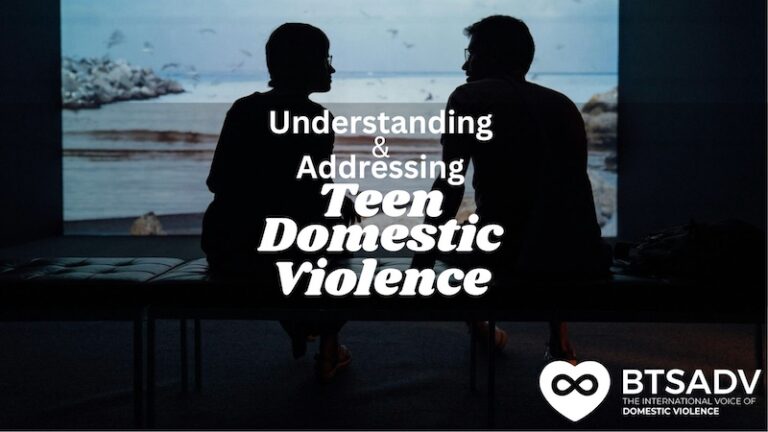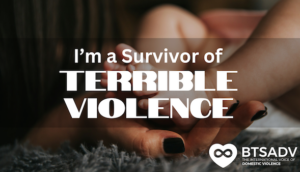By Jessica Christinson
Domestic violence harms many, and among teenagers, it remains an often-overlooked crisis. People frequently view teenage relationships as innocent or just part of growing up, which makes it easy to miss the warning signs of abuse.
But teen domestic violence is accurate, and recognizing it earlier can help young people build healthy relationships and futures.
What Is Teen Domestic Violence?
Teen domestic violence, also called teen dating violence, occurs when a teenager experiences physical, emotional, sexual, or psychological abuse in a romantic relationship. These can include:
- Physical abuse: Hitting, slapping, or any violence.
- Emotional abuse: Insults, threats, or manipulation aimed at controlling or breaking down a partner.
- Sexual abuse: Unwanted advances, coercion, or assault.
- Digital abuse: Using social media, texting, or other technology to stalk, harass, or control a partner.
This issue affects teens of all genders, sexual orientations, and backgrounds. Many cases go unnoticed because victims feel afraid to speak out, do not recognize the abuse, or believe unhealthy relationship behaviors are normal.
Alarming Statistics
The Centers for Disease Control and Prevention (CDC) states that 1 in 11 female and 1 in 15 male high school students experience physical dating violence each year.
Emotional abuse is even more common—1 in 3 teens say they have experienced it in a relationship. Victims of teen dating violence face a higher risk of depression, anxiety, and suicidal thoughts. They also struggle in school and experience social isolation.
Addressing this issue now is critical because these patterns often continue into adulthood, making it harder for victims to escape the cycle of abuse later in life.
Why Does Teen Domestic Violence Happen?
Several factors contribute to the problem:
- Lack of Awareness: Many teens—and their parents—fail to recognize abusive behaviors and dismiss them as everyday relationship struggles.
- Media Influence: Movies, TV shows, and music often glorify toxic relationships, making unhealthy behaviors seem acceptable or romantic.
- Peer Pressure: Teens feel pressure to stay in a relationship, even if harmful, to maintain social status or avoid being alone.
- Limited Relationship Experience: Young people struggle to identify healthy relationships and set boundaries.
- Family Influence: Growing up around violence or controlling relationships normalizes abusive behaviors.
- Low Self-Esteem: Teens with low confidence tolerate mistreatment out of fear that they will not find another relationship.
Recognizing the Signs of Teen Domestic Violence
Spotting abuse sooner is key. Look for these warning signs:
- Unexplained bruises or injuries
- Sudden changes in behavior, mood, or grades
- Withdrawal from friends and family
- Constant communication with a partner who monitors their activities.
- Fear or discomfort when discussing their relationship.
- Making excuses for their partner’s harmful behavior
- A change in clothing style and makeup
If you notice these signs in someone you care about, they may need support to recognize and leave an unhealthy relationship.
The Long-Term Impact of Teen Domestic Violence
Abuse at an early age causes lasting effects, including:
- Mental Health Struggles: Survivors often experience anxiety, depression, and post- traumatic stress disorder (PTSD).
- Substance Abuse: Many turn to drugs or alcohol to cope.
- Difficulty Trusting Others: Unhealthy relationships make forming safe, supportive connections hard.
- Risky Behaviors: Survivors engage in unsafe sex, self-harm, or other harmful activities.
- Academic Struggles: Victims lose focus in school, which leads to declining grades or dropping out.
How Can We Address Teen Domestic Violence?
Preventing and responding to teen domestic violence requires a team effort. Here is what we can do:
- Educate Teens: Schools must instruct students about healthy relationships, boundaries, and consent.
- Encourage Open Communication: Parents should create a safe space for teens to discuss relationships without fear of judgment.
- Build Confidence and Independence: Helping teens develop self-esteem makes them less likely to tolerate abuse.
- Resources and Support: Schools and communities must offer accessible services like counseling, hotlines, and peer support groups.
- Strengthen Legal Protections: Laws should ensure teens can seek protection from abusive partners.
- Model Healthy Relationships: Positive relationship examples, whether at home, in school, or through the media, help shape young people’s understanding of love and respect.
How Can You Help?
If you believe a teen you know is in an abusive relationship, here is how you can support them:
- Listen Without Judging: Let them talk without blaming or pressuring them to act they are not ready for.
- Reassure Them: Remind them they are not alone, and that help is available.
- Encourage Professional Help: Suggest talking to a counselor, teacher, or trusted adult.
- Teach Them About Healthy Relationships: Sometimes, teens do not realize they are in an abusive relationship until they see what a healthy one looks like.
- Step In When Necessary: If the situation is dangerous, involve a trusted adult or authorities to ensure their safety.
Moving Forward
Breaking the cycle of teen domestic violence starts with awareness, education, and action.
Open discussions about this issue empower young people to recognize red flags, set boundaries, and demand respect in their relationships.
We all play a role—parents, teachers, friends, and communities—in creating a world where every teen feels safe, valued, and free from fear. By making this issue visible, offering support, and promoting healthy relationships, we can help teens build a future free from abuse.
Check These Resources:
- Complete Guide to Mindful Meditation, and Emotional Healing.
- The Hidden Impact of Teen Dating Violence
- Find Support with BTSADV
Support Line
Other Resources and Information:




